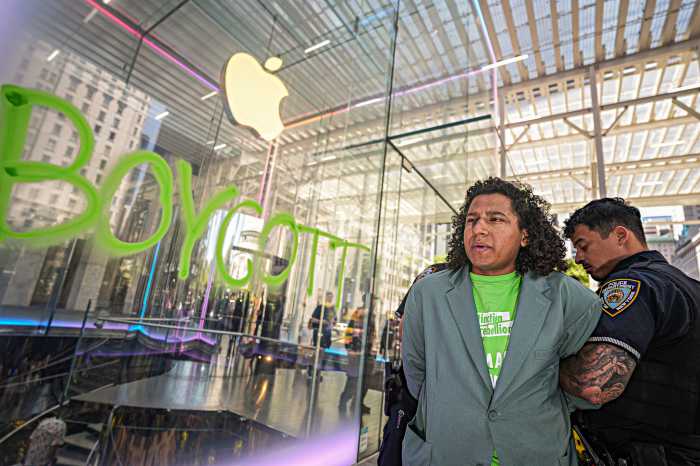
New York’s relationship with the Italian mob has a storied, and often very complicated, history.
The modern Italian mob took hold in the city in the early 1900s with the mass emigration of people from southern parts of Italy and Sicily, but it wasn’t the first iteration.
The mob as modern America thinks of it actually grew out of the disintegration of the Five Points Gang, which “was loosely a bunch of guys who later became infamous,” said mob historian Christian Cipollini. Those “guys” included Al Capone and “Lucky” Luciano, who would later go on to become a major player in the Castellammarese War (and the birth of the modern mob).
How it started
The first shots of the Castellammarese War were fired in 1930, Cipollini said, when Luciano “cut a deal” with Salvatore Maranzano to get rid of “Joe the Boss” Masseria, who Luciano had been doing business with.
By the spring of 1931, Luciano’s men had killed Masseria and Maranzano declared himself the “boss of bosses,” demanding tribute payments.
But Cipollini said Maranzano, known for being “ruthless and very powerful,” became paranoid, and put a hit out on Luciano and another crime boss, Vito Genovese.
So by September, Luciano and Genovese enlisted the help of Jewish mobsters Meyer Lansky and “Bugsy” Siegel, who sent in four men posing as treasury agents to kill Maranzano.
“Maranzano dug his own grave,” Cipollini said. “Everyone was on board.”
Cipollini said the group then eliminated the concept of boss of all bosses in favor of creating “the Commission,” which was “built on Jewish and Italian leadership,” and instituted five mafia families.
The five families
The five original Mafia families were the Luciano family (which later became known as the Genovese family), the Mangano (which became the Gambino family), the Bonnano family, the Lucchese family, and the Profaci family (which would be renamed the Colombo family), Cipollini said.
For the most part, they all worked together, dividing up their territories and controlling only their geographic areas. And for the next several decades the Mafia was at the height of its power. Amid all the infighting and killing their way to the top, they managed to pull off some of the most infamous heists in history.
In December 1978, for example, the Lucchese family successfully robbed the Lufthansa cargo facility at Kennedy Airport, making off with more than $5 million in what the FBI at the time called the largest cash robbery in history, according to The New York Times. The heist went on to inspire the 1990 movie “Goodfellas,” which Cipollini said is “for the most part” fairly accurate.
But it was in the 1980s when John Gotti killed his way to becoming boss, and in the process brought back the style and flare of a 1950s Hollywood gangster, Cipollini said.
“The problem is that it made him famous and cops don’t like famous gangsters,” he said, adding that Gotti was known as the “Dapper Don.”
Gotti would wear $1,800 suits, drive a Mercedes-Benz and always make time for the press, Cipollini said. By 1990, he’d been acquitted three times, earning him the nickname the “Teflon Don.”
But in 1992, Gotti was finally sentenced to life in prison after being convicted of murder and racketeering, including for the planning the 1985 death of former Gambino boss Paul Castellano (who he took over the family from) in front of Sparks Steak House in Manhattan.
It was on that day, Cipollini said, the Mafia died.
“He knew it was coming, he still smiled,” he said about Gotti’s conviction. “All of the families were getting busted then. The Feds were going crazy. The heyday ended the day John Gotti was sentenced for the whole Mafia in New York. They’ve never been the same. And like any other empire, criminal or otherwise, there is only one place to go when you hit the top.”
In 2002, Gotti died of throat cancer in a Missouri prison hospital at the age of 61, according to the New York Daily News.
Where are they now?
The five families still exist, of course. Just not in the way they once did, Cipollini said.
Over the last couple decades, other groups have taken power, claiming areas of criminal activity for their own. But the Mafia will always remain, he said, as long as the lure of history remains.
“They’ll exist because there will always be people who want to be part of that,” Cipollini said. “They exist more as a figure head of things.”
But that doesn’t mean they aren’t getting their hands dirty, most notably recently with online prostitution and credit card fraud, he said.
But Cipollini said it seems lately that everyone wants a book deal, and is quick to “rat” on their fellow criminals.
“There was a day when there was some honor around those thieves,” he said. “You can’t exist as a criminal organization when everyone wants a book deal.”


































